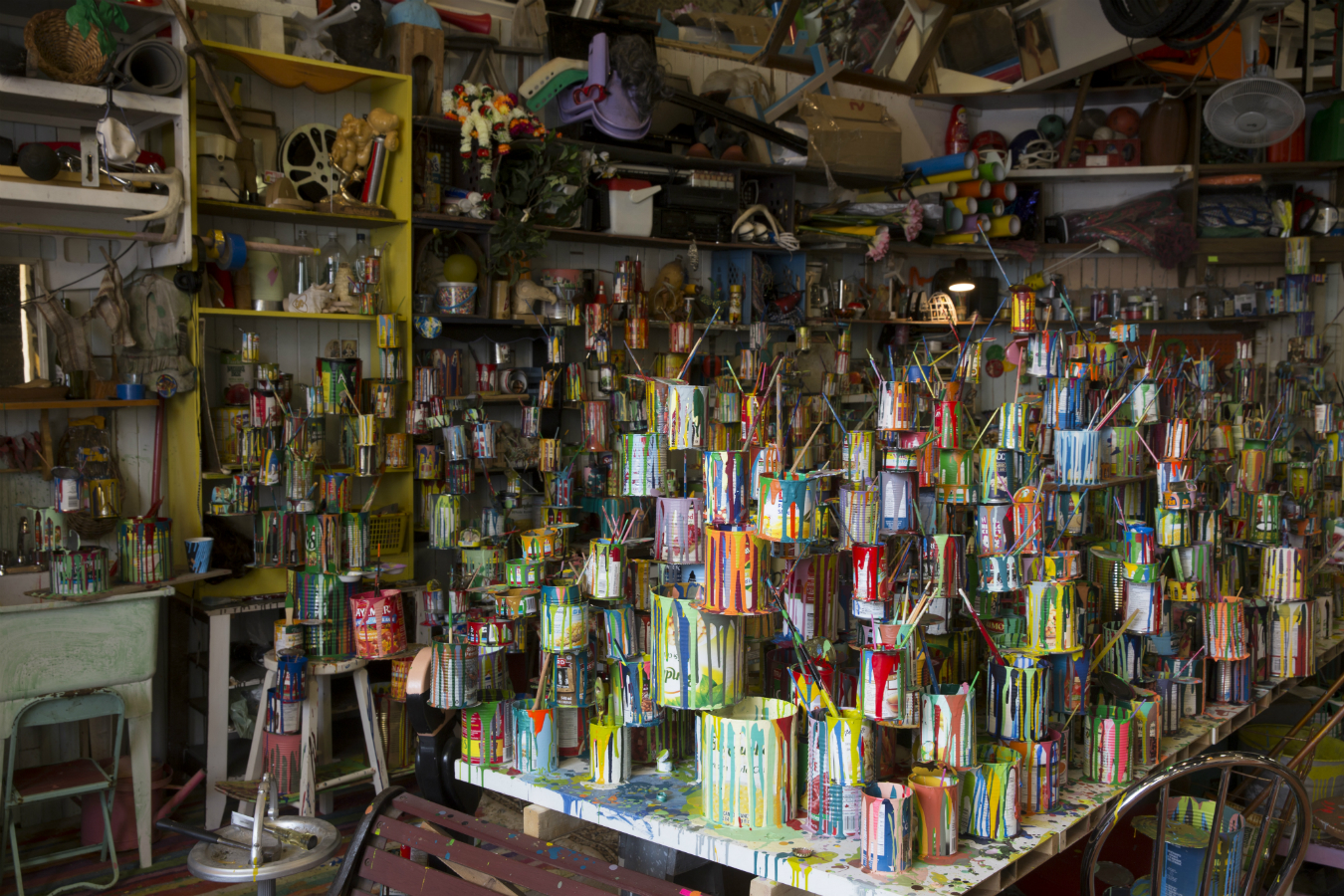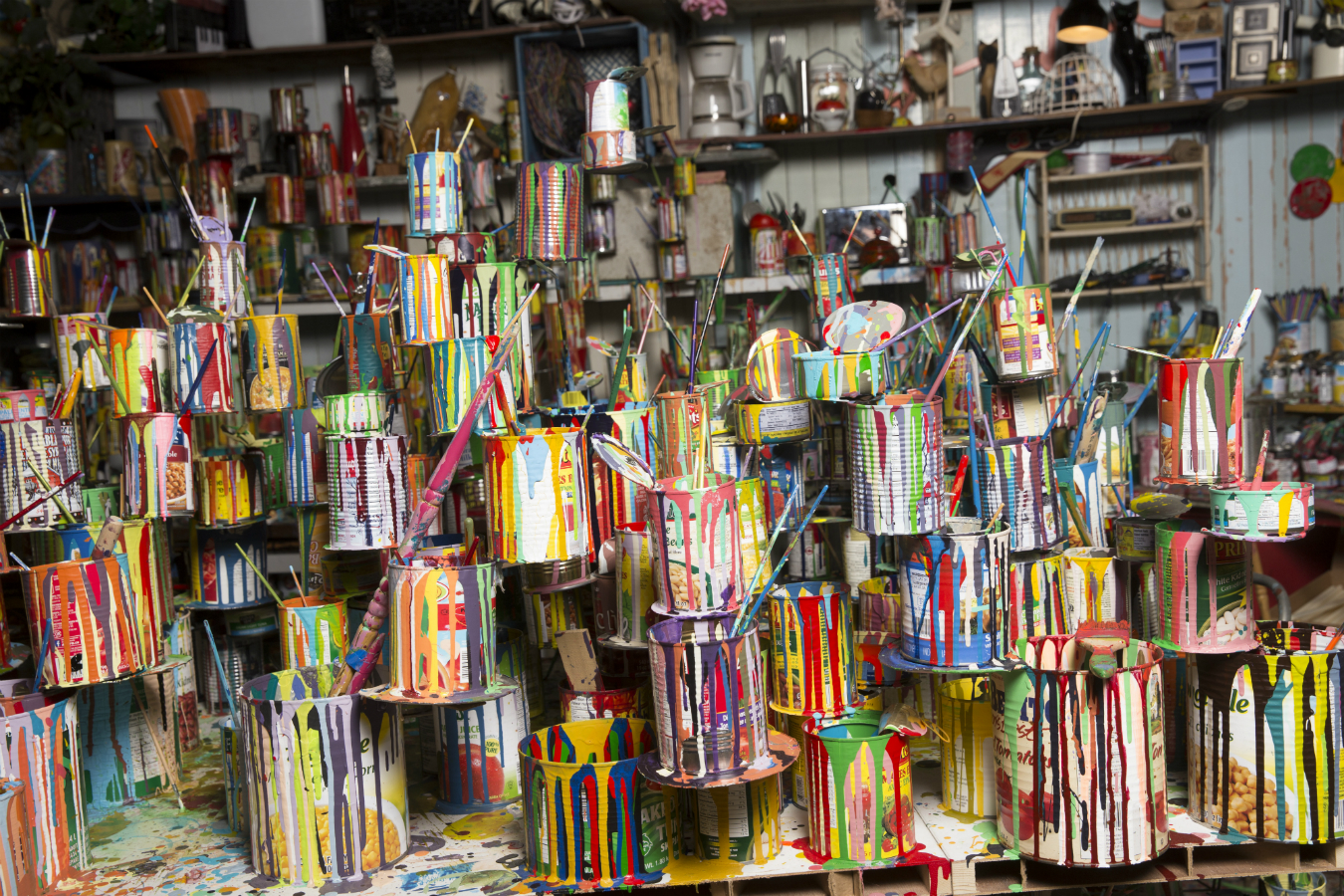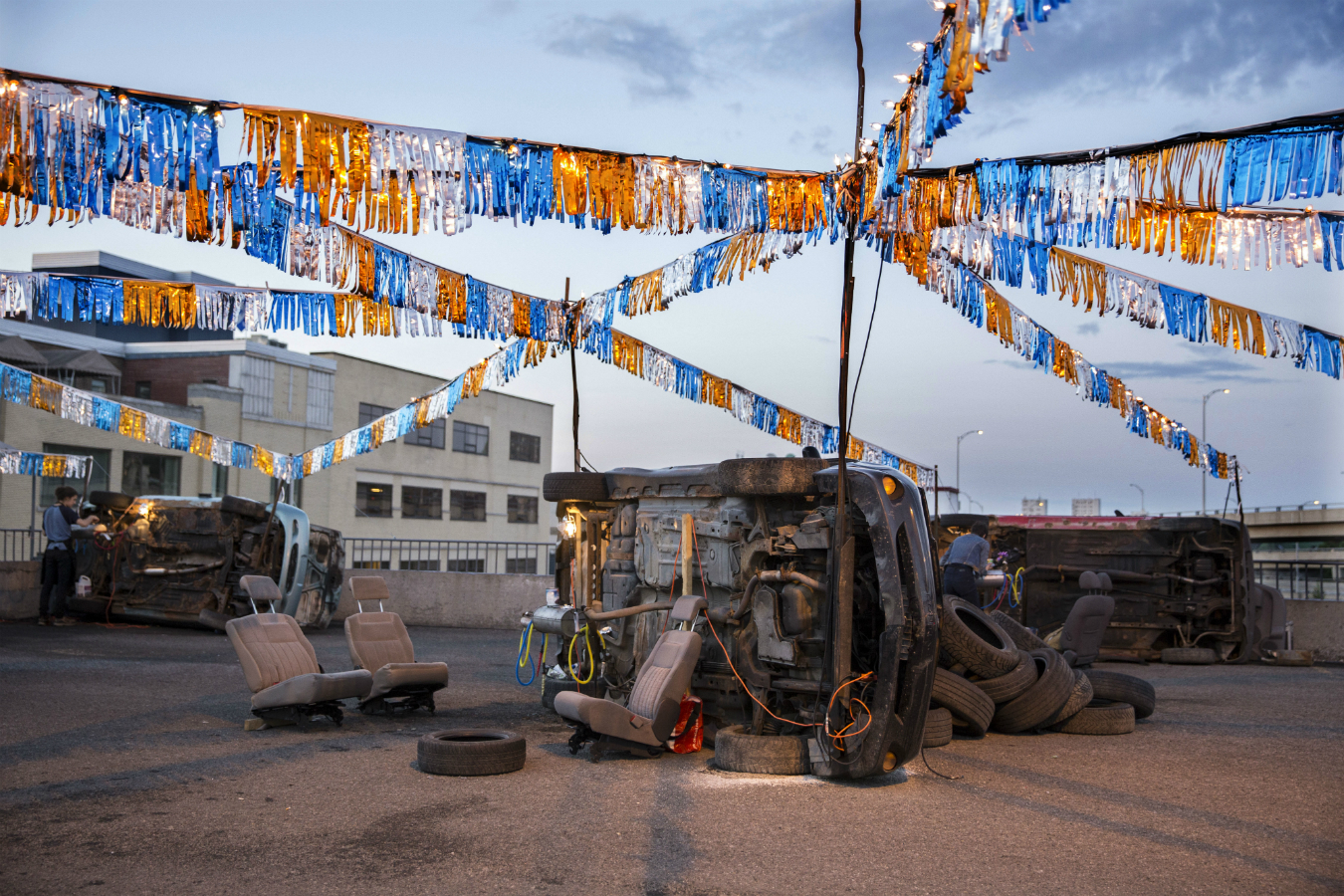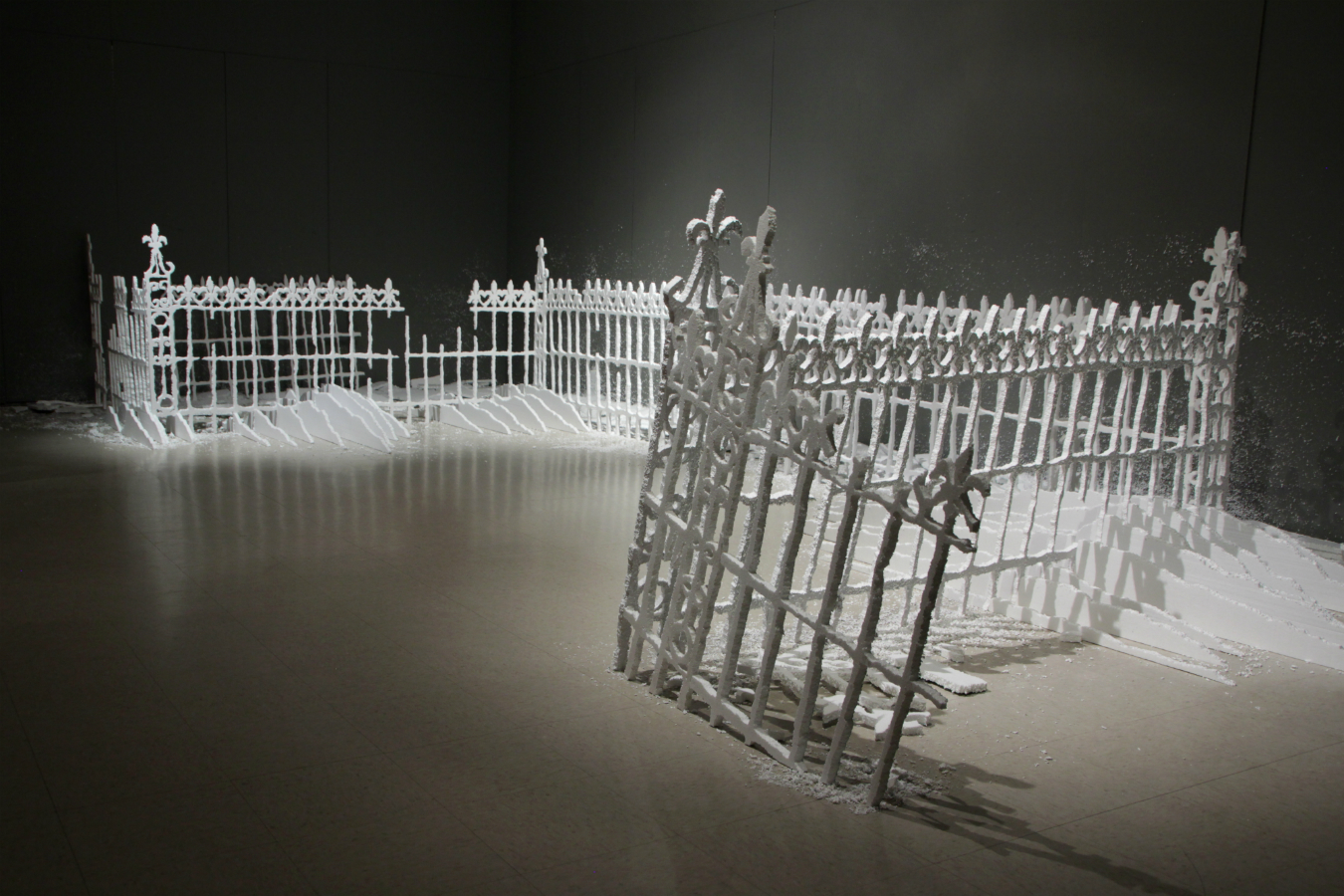“Sébastien couldn’t be with us because he, well, he is playing tennis,” Jasmin Bilodeau laughs, taking a seat at Le Renard et la Chouette cafe in Quebec City. He is referring to Sébastien Giguère, his collaborator, and one-third of the artist collective BGL. The third member, Nicolas Laverdière, takes a seat across from Bilodeau after saying a warm bonjour to the chef, Émile Tremblay.
The trio met as art students at Laval University almost 20 years ago. Since then, they have been creating some of Canada’s most fun, interesting, and dynamic contemporary art. Works such as the 2008 piece Sausage Project—which found the artists grilling hot dogs on sewer grates, serving them to eager participants—and Artique Feeling II—which suspended $12,000 worth of 20 dollar bills in the air at the Musée National Des Beaux Arts du Quebec—are representative of the quirky, humour-filled nature of their art.
“We liked to make things. So that was the connection. And we liked alcohol,” Laverdière says, recalling the group’s initial attraction. “You mean wine?” Bilodeau replies, prompting him to order a bottle of white. The group has amassed a great deal of accolades and exhibitions since that fateful, boozy meeting. A slew of shows at galleries and museums around the world, including solo exhibitions at the National Gallery of Canada and Vancouver’s Contemporary Art Gallery, all led up to their largest exhibition to date: representing Canada at the 2015 Venice Biennale.
Making is at the centre of the group’s practise, and perhaps the most obvious connecting element. In BGL’s world, everything is real. Renderings, models, images don’t exist within their oeuvre. “I think we’ve always liked to work with the real scale. It something we really appreciate. Because we take an object that people know, and we transform it,” Laverdière states, as Tremblay hands out a cold, green gazpacho—c’est bon, we agree. Examples of this mentality are plentiful in BGL’s work. When commissioned to do a 65-foot structure in Montreal, the group found the scale both intimidating and illuminating. “We could do just a phallus but it’s a bit boring, no?” laughs Bilodeau. “So, we decided to make something with buses. And we decided to make a Ferris wheel with buses.” The resulting $1.1-million piece, La vélocité des lieux (the most expensive public work in Montreal’s history), contains the metal structures of five city buses, illuminating the marginalized neighbourhood of Montreal North. A feat of engineering alone, the work can be appreciated by passersby as much for its whimsy and colour as its conceptual merits.
Making is at the centre of the group’s practise, and perhaps the most obvious connecting element. In BGL’s world, everything is real.
When visualizing such massive undertakings, BGL allows the ideas to be spurred by where they are exhibiting. “Usually we go in to see a place first, and we examine the place. Then after that we have a lot of discussion with wine. And then we get ideas like that, and it takes time to make a real decision,” Laverdière says. “In Venice, that’s exactly what we did. We wanted to go to the pavilion as soon as possible. To feel the place and then to find something that would be surprising.” There, the collective was struck by the derelict aesthetics of the pavilion, which was lacking freshly painted white walls and fluorescent lighting. “We found that it was like an abandoned cottage, but cottage for rich people because it’s really big,” Laverdière laughs. “There was a kind of domestic energy coming out of the pavilion different from an institute or white cube.” At their pavilion, entitled Canadassimo, BGL created less of an installation and more of an immersive living space. The group created a fully-stocked dépanneur that fronts a studio of sorts, enveloping the Biennale attendee in the world of BGL and out of the realm of “seeing art”. “It’s super physical and it makes you forget that you’re looking at art,” Laverdière says. “So you enter there, and when you arrive, even if you know the place, it’s the journey of discovering the place.”
Viewing, or more accurately experiencing, BGL’s work isn’t a dry, tedious procedure. Play and creation are prominent, and there’s meaning and importance in those elements. Discovering rather than observing re-defines the context of viewing art. It opens the experience up and allows for interpretation at a level that is unintimidating, and to use a word often banned for exhibition catalogues, pleasurable. As Laverdière says, “it changes your relationship with art.”
Chef Tremblay brings a large tray, haphazardly but beautifully strewn with fresh local spinach, dehydrated olives, and bacon in tomato dressing. “I’ll take this. Pour mon moustache,” Bilodeau says with a wink, reaching for a napkin.
More from our Arts section.













